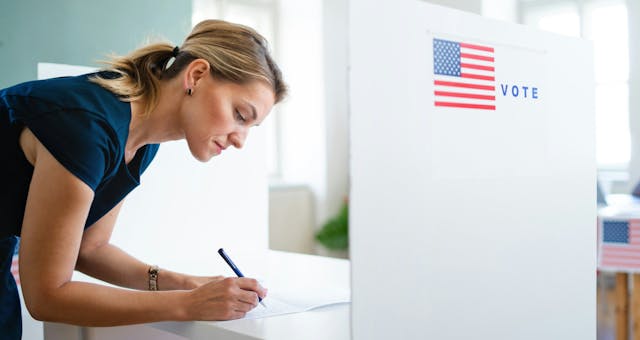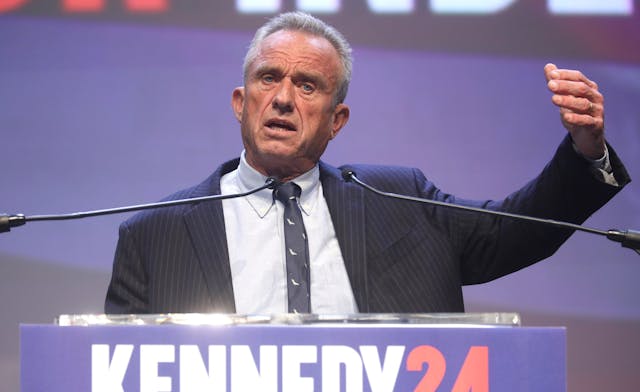How Ranked Choice Voting Survives the "One Person, One Vote" Challenge

SAN DIEGO, CALIF - One of the most prominent arguments against ranked choice voting, outside its complexity, is that voters end up getting multiple votes, so it must violate the constitutional precedent of "one person, one vote."
The problem with this argument is a fundamental misunderstanding of ranked choice voting and how it works. Voters don't get multiple votes. They only get a single vote that counts toward the results.
First, Some Background
The legal precedent of "one person, one vote" was established in the Supreme Court case Reynolds v. Sims (1964), and used in a series of cases in the 1960s.
In Reynolds v. Sims, the Supreme Court struck down the constitutionality of malapportionment, the practice of drawing electoral districts of various sizes to disadvantage a particular group of people -- whether that is by race or political affiliation or other.
In this case, the apportionment of the Alabama legislature was challenged, as ratio variances as great as 41:1 existed from one state senatorial district to another.
In other words, the number of voters casting a ballot for one senator could be 41 times higher than in another district, which diluted the voting power and influence of voters in larger senatorial districts.
The Supreme Court ruled 8-1 that the state could not weigh the votes of people based simply on where they lived, and that every vote should be weighted equally in the redistricting process.
“Legislators represent people, not trees or acres. Legislators are elected by voters, not farms or cities or economic interests," wrote Chief Justice Earl Warren.
The high court used the principle of "one person, one vote" to strike down malapportionment in state legislative districts, a precedent that was extended to congressional districts in Wesberry v. Sanders.
The decision established the legal precedent that no voter should have greater influence or voting power over another, which reformers point to when they push for broad systemic reforms to improve elections and the political process nationwide.
So What About Ranked Choice Voting?
Most jurisdictions in the US use a choose-one voting method where voters cast a vote for a single person, and the person with the most votes wins.
In a system that at every institutional level tells voters there are only two viable options -- Republican or Democrat -- this causes many voters to cast their ballots strategically, leading to "lesser-of-two-evils" voting (i.e. voting against the least preferred candidate rather than the preferred candidate) and vote splitting.
This could also mean candidates win without majority support in some cases -- particularly in systems that do not have a runoff process.
Instant runoff voting (the most popular form of ranked choice voting among US reformers) is an alternative voting method that is designed to remedy these problems that affect voter choice and empowerment.
Voters rank candidates on the ballot in order of preference. If no candidate gets over 50% of first choice selections, an instant and automatic runoff is held, eliminating the last place candidate and dispersing their voters' second choices among the remaining candidates.
The process is repeated until a candidate has over 50% of the vote.
Opponents like Bruce Poliquin, who filed a lawsuit in federal court challenging the constitutionality of Maine's ranked choice voting system, argue this gives people multiple votes. Yet this is either a fundamental misconception or a grave and intentional deception.
Voters aren't casting a ballot for more than one candidate. They are expressing their preferences and only their choice in the final round of tabulation counts toward the results.
The technical term is single transferable vote. The idea is to show how these voters would ultimately vote should runoff elections be needed to produce a winner with majority support without using additional taxpayer dollars and resources for new elections -- elections that would have a much lower turnout.
Ranked choice voting is not a traditional voting method, thus it cannot be viewed in the same lens as a traditional method. That is the common problem many opponents have in understanding the reform.
Enhancing Voter Equality
"One person, one vote" means every vote cast should be treated equally under the law. Voters should have an equal say in who represents them. Opponents of alternative voting methods like ranked choice voting tend to apply an extremely strict and literal interpretation of what the precedent means.
The idea behind ranked choice voting is that voters can indicate on the ballot which candidate they prefer most without feeling like they are wasting their vote, while also declaring their preference for the top vote getters should no one get a majority.
In many ways, this upholds the principles of "one person, one vote" better than the choose-one voting method, because it gives voters greater confidence in expressing their true preferences in an election while also ensuring they get a say in the final results.
The choose-one method forces many voters to surrender their vote to the "lesser of two evils," rather than voting their conscience, which limits real choice. That doesn't empower the vote or ensure equality.
The US Constitution gives state and local governments fairly broad discretion in determining how elections are conducted within their jurisdictions. The process, however, should treat voters fairly and equally and not violate other provisions of the constitution.
To date, no court has found that ranked choice voting violates the US Constitution. In fact, its use has been upheld. Specifically, the Ninth Circuit Court of Appeals upheld its use in San Francisco in the case Dundum v. Arntz.
Be sure to check out more articles on ranked choice voting here.



